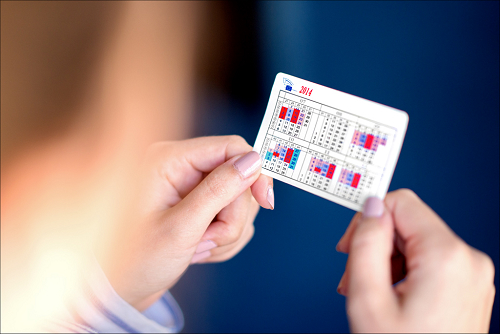The secrets behind Parliament's colourful calendar
Red, blue, pink, turquoise... These are not the different shades of the rainbow, but the colours marking the activities of the Parliament. The weeks in the Parliamentary calendar are coded with different colours each indicating that period’s particular activities. Here is a short guide to the colours that will be directing the work of the new Parliament for the next five years.

Colours of the Parliament's activities calendar
Blue - political groups
In weeks that are marked blue MEPs meet with other members from their political group. The political groups in Parliament bring together MEPs coming from different national political parties, sharing the same political stance and affiliations. To establish a political group, 25 different MEPs from at least seven different member states are needed.
During the political groups’ meeting, MEPs discuss their positions on proposed legislation, to be debated and voted on during plenary. They scrutinise reports from Parliamentary committees, table amendments and agree on a group position.
Pink –committee meetings
Each MEP works in one or more parliamentary committees, dedicated to a particular area of European policy, ranging from foreign affairs to economic issues, equality, education and culture.
Pink weeks are dedicated to committee meetings, the forum where MEPs coming from different political groups discuss draft legislation, propose amendments, consider Commission and Council proposals and draw up reports to be presented to the plenary.
Red – plenary sessions
All this work culminates during Parliament’s plenary sessions, in Strasbourg or Brussels. Plenary sessions, marked red on the calendar, are when MEPs debate important issues, take significant decisions through votes by adopting, amending, or rejecting legislation.
In July, two important plenary sessions are to be held. During the first constitutive session, MEPs elect the president, vice-presidents and other representatives of the new EP, while during the second plenary session, the presidency of the European Commission will be on the agenda.
Turquoise – work outside the Parliament
During turquoise week, MEPs undertake activities outside the Parliament. They work either in their constituency in their home country, where they have the opportunity to interact with their electorate, or in Parliamentary delegations, responsible for maintaining relations with non-EU countries.
Source: European Parliament
- 375 reads
Human Rights
Fostering a More Humane World: The 28th Eurasian Economic Summi

Conscience, Hope, and Action: Keys to Global Peace and Sustainability

Ringing FOWPAL’s Peace Bell for the World:Nobel Peace Prize Laureates’ Visions and Actions

Protecting the World’s Cultural Diversity for a Sustainable Future

Puppet Show I International Friendship Day 2020

